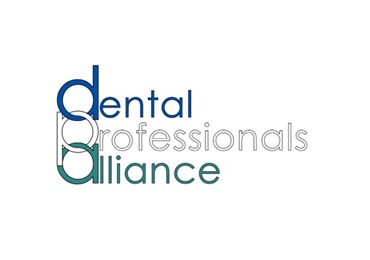Clear aligner treatment: What can we learn from complaints and concerns?
Clear aligner treatment (CAT) is popular and it’s easy to see why. It may offer a discrete, comfortable and convenient alternative to traditional orthodontic appliances. The size of the CAT market is huge, and has been forecasted to increase six-fold from its 2020 value of £1.9 billion, by 2028.
Predictably, this rise in CAT popularity has also resulted in an increasing number of complaints and concerns being raised with the Dental Complaints Service (DCS) and the GDC. These issues mostly to relate to patients' expectations not being met or treatment outcomes being compromised.
Of the 1,114 clinical issues raised with the DCS last year, the most frequent category was dentures, which made up 24% (187). Those relating to the category of “braces” and which may have included CAT were recorded by DCS as:
- Brace (removable appliance, including aligners) (62)
- Invisalign (77)
- Brace (retainer, orthodontics) (32)
- Remote orthodontics (4)
There were an additional 24 cases received relating to fixed orthodontic appliances.
Here I explore the types of issues we are seeing and share some insights into the clinical matters referred to us that reference aligner-based treatments.
We need to better manage patient expectations
Complaints and concerns with aligner treatment can arise at various stages of the patient journey. Examples of more common issues observed with care at the pre-treatment stage relate to:
- misdiagnoses
- inadequate treatment planning
- lack of informed consent, and
- poor management of patient expectations.
Although aligners have the potential to offer convenience and comfort, and can yield good treatment outcomes for suitably selected cases with few risks, they may not be as effective for the management of certain malocclusions or for undertaking specific tooth movements compared to other interventions. Some clinical presentations have also been seen to increase the risks, or present difficulties in achieving the outcomes sought, such as short clinical crowns or when bridges and implants are present.
Inadequate baseline assessments and evaluations can make it challenging to determine the causes of adverse outcomes, which are sometimes reported when aligner therapy has been provided, such as bone loss, gum recession, apical root resorption, enamel demineralisation, or loss of pulp vitality.
Successful aligner treatment outcomes require patients to understand the risks, benefits, likely outcomes, and the long-term care needs. At times, issues reported to us have arisen from:
- inadequate discussions about compliance with aligner wear
- the use of intra-oral elastics
- the need for composite attachments and for interproximal reduction (IPR).
Unrealistic expectations can stem from not fully addressing patient concerns or from underlying complex medical conditions like Body Dysmorphic Disorder (BDD). BDD is a mental health condition where the person spends a lot of time worrying about flaws in their appearance, which are often unnoticeable to others.
The higher costs associated with CAT can also elevate patient expectations. During treatment, common issues raised with the GDC and DCS include:
- poorly fitting aligners
- tenderness and discomfort
- frequent breakages or loss of aligners
- the treatment duration, especially when further time is needed than what was expected at the outset of treatment or there are increased costs associated with additional aligners
- enamel damage during IPR or following the removal of composite attachments
- unexpected tooth movements, and
- unclear financial responsibilities, particularly where a replacement aligner is required due to damage or because teeth have moved.
At the post-treatment stage, issues reported have involved the aesthetic and functional outcomes following completion of a course of aligner therapy, additional financial burdens of any refinements or corrective treatment on referral, and the additional treatment times that can accompany any remedial care.
Other more common issues that feature at this stage include, relapse, retainer compliance and breakages, and unclear responsibilities for ongoing care, especially when treatment is transferred to another provider (sometimes, either mid-treatment or after the planned tooth movements are complete). The DCS suggests that treatment plans should include a full breakdown of all costs and how long aligner guarantees last to help ensure that any refunds or remedial treatment are limited.
How to limit treatment outcomes being compromised
The appearance of the smile and teeth (the “aesthetic zone”) is key to facial attractiveness, influencing social and professional acceptance.1 Consequently, patients frequently seek treatments to enhance their aesthetic zones. With a growing preference for minimal intervention, adult orthodontic treatments, including CAT systems, have surged. This trend has coincided with a shift towards private dental care from the NHS since 2020.2
Clear aligner treatments often include tooth whitening and composite bonding as less invasive alternatives. CAT's popularity is bolstered by minimal orthodontic training requirements, allowing primary care dentists to offer it conveniently in-house, and by impactful commercial marketing strategies. Additionally, providing CAT enhances revenue and develops clinical skills. However, risks may arise when the treating clinician is overly reliant on a third party for initial planning, which is typically based on patient records, including photographs, scans, radiographs, and models.
To help ensure safe and effective oral care:
- Complete essential pre-treatment assessments: Including both periodontal examination and oral disease risk assessment. This is vital for accurate diagnosis and successful treatment planning. The treating clinician holds ultimate responsibility for the treatment outcome. Even if your patient wants to proceed with aligner treatment, you should not do so without logical treatment planning and discussions, especially if active oral pathology is present. Systematic orthodontic, occlusal and aesthetic zone examinations, along with further clinical assessments and special investigations, help identify potential challenges and complexities where aligner treatments may be overly ambitious or (initially) inappropriate.
- Clarity about the patient’s expectations is crucial: Clinicians must critically reflect on their competence and training to determine if these expectations can be met. You will need to have a clear understanding about the limitations of CAT and possess the necessary indemnification. Seeking a second opinion or specialist consultation may be beneficial to you and your patient.
- Obtain valid consent: You should ensure your patient understands realistic time frames for treatment completion, and thoroughly discuss and document the risks (including any limitations), potential benefits, likely prognosis and the cost (including costs for replacements, refinements, referrals and any further restorative treatment which might be required, such as the replacement of crowns, veneers or partial dentures). And remember to present any reasonable alternatives to your patient (e.g. fixed appliances, specialist referral, or no treatment). Covering all these things is essential to obtaining valid consent. While it’s important to consider patients’ preferences, and some may explicitly request CAT, it is your responsibility to ensure that relevant alternatives are properly appraised and that the information provided is understood. The DCS suggests that you might also later find it useful to invite your patient to sign to confirm their consent and understanding to avoid any future misunderstandings about what has been discussed. You should ask them to sign the written treatment plan.
- Provide patients with appropriate written treatment plans: These should include any updates to the initial plan, if required. Keep copies. Emphasise the importance of compliance with the treatment plan, including aligner and retainer use, the need for good oral hygiene practices, regular follow-ups, and understanding measures like IPR, the use of intra-oral elastics and composite attachments. The latter should not come at a surprise during care and, when they are subsequently declined, it may have a considerable impact on the treatment outcome.
Remember to also:
- Ensure timely supervision, with periodic reviews, to help anticipate any problems and facilitate prompt referrals to more experienced colleagues if needed.
- Maintain clear, complete, contemporaneous, and accurate patient records, including radiographs, consent forms, photographs, models/scans, laboratory prescriptions, statements of conformity and any referral letters.
- Above all, always act in the patient's best interest before your own (financial, personal or other), or those of any colleague, business, or organisation, and follow any clinical guidelines relevant to the presenting situation.
Address any patient concerns early and seek guidance
Many of the issues raised by patients can be successfully managed through effective complaint handling. You should always attempt to address any patient concerns early and give careful consideration to the issues being raised.
We do not see the cases where complaints have been handled well. Poor complaint management is often the reason issues are raised with us. Treatment provided by dental team members who are not adequately trained or fully competent can also negatively impact patient safety or lead to complaints.
Only registered dental professionals can provide direct-to-consumer orthodontics using aligner treatment, which often includes remote interactions and consultations.
Information is available online for those thinking about whether having aligners sent to their home is safe and right for them. Further information is available for dental professionals to support decision-making.
The following sources of information may also be helpful:
- GDC statement on direct-to-consumer orthodontic treatment
- Direct-to-consumer orthodontics: information to support professional judgement
- Information for patients: Aligners or braces sent directly to your home
- Standards for the dental team
- Medical devices: the regulations and how we enforce them
- British Orthodontic Society: Clear aligners
- Dental Complaints Service Review 2023 and 2024
References:
- Mehta SB, Banerji S, Aulakh R. Patient assessment: preparing for a predictable aesthetic outcome. Dent Update. 2015 Jan-Feb;42(1):78-80, 82-4, 86
- Views and experiences of dentistry: Survey of the UK public. GDC, May 2023
 eGDC
eGDC















